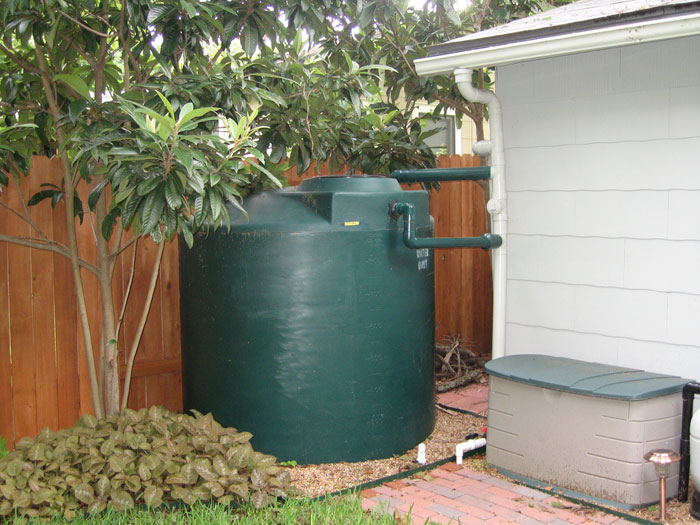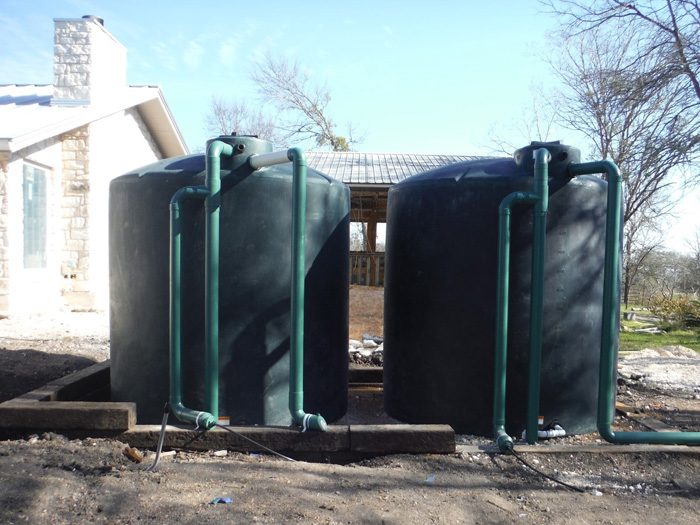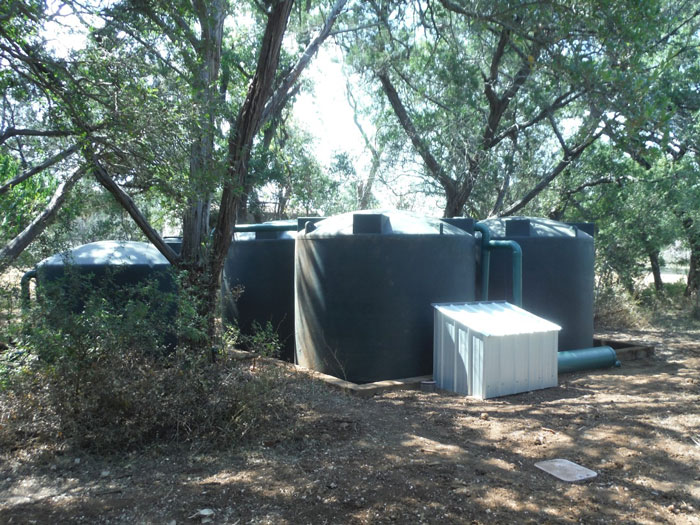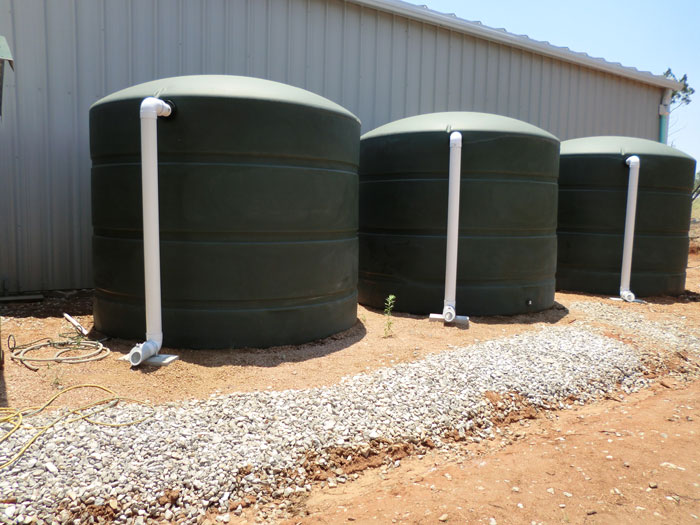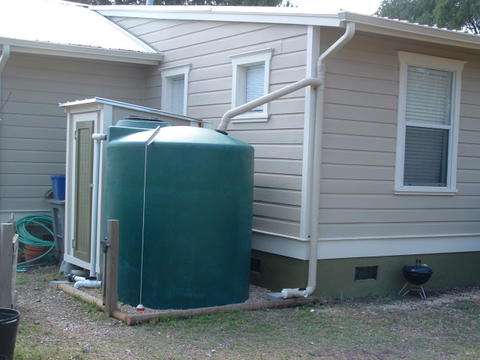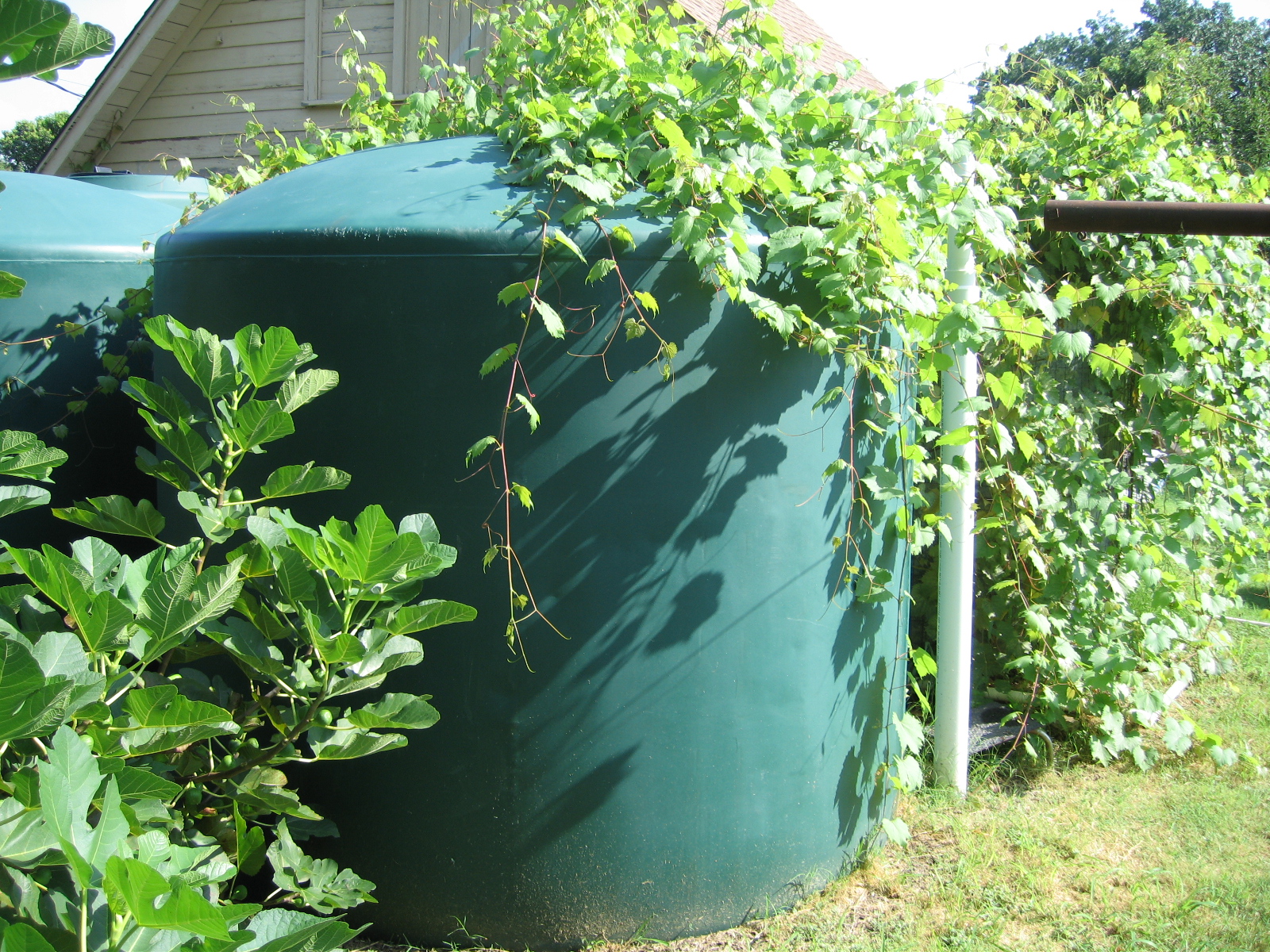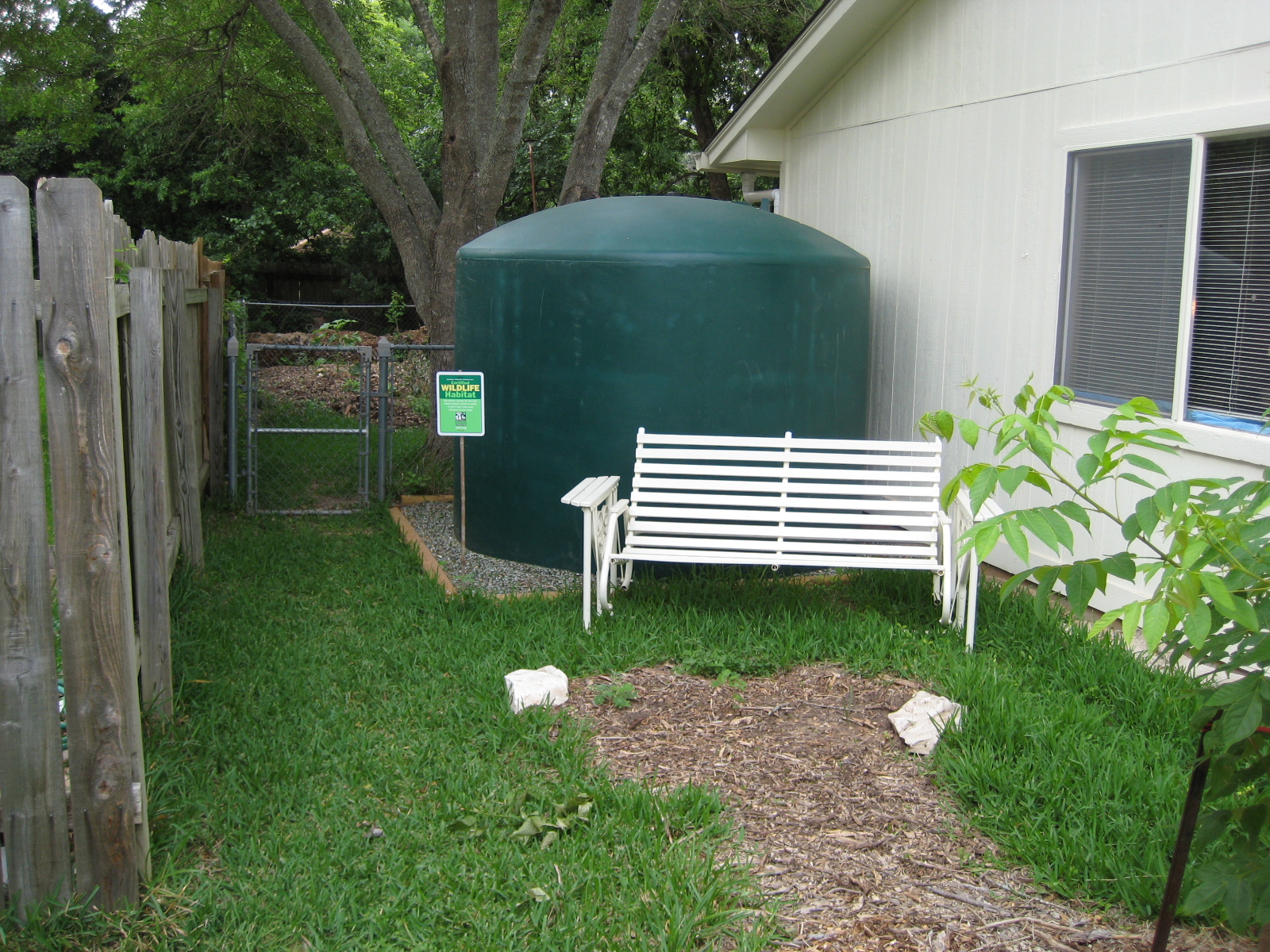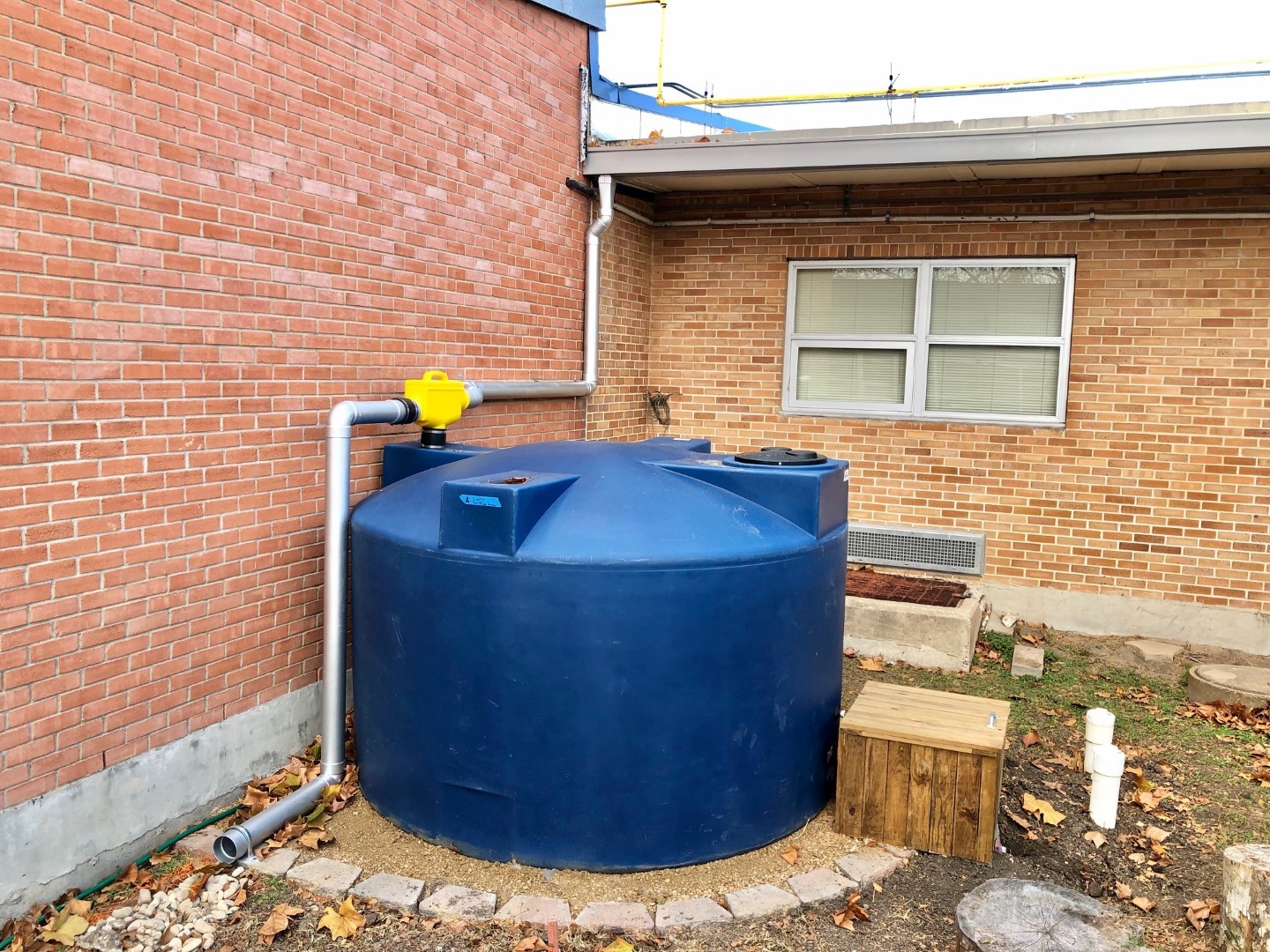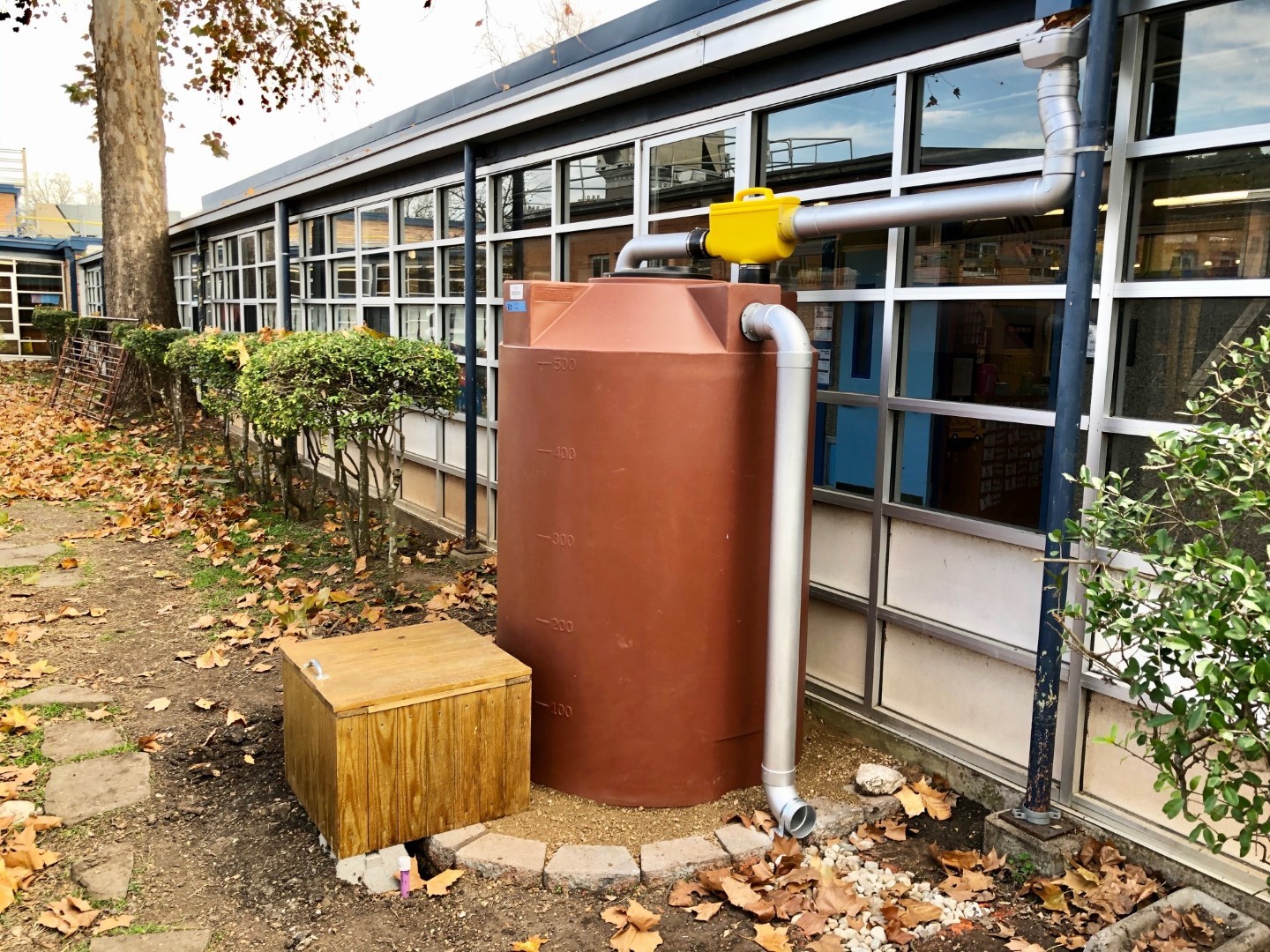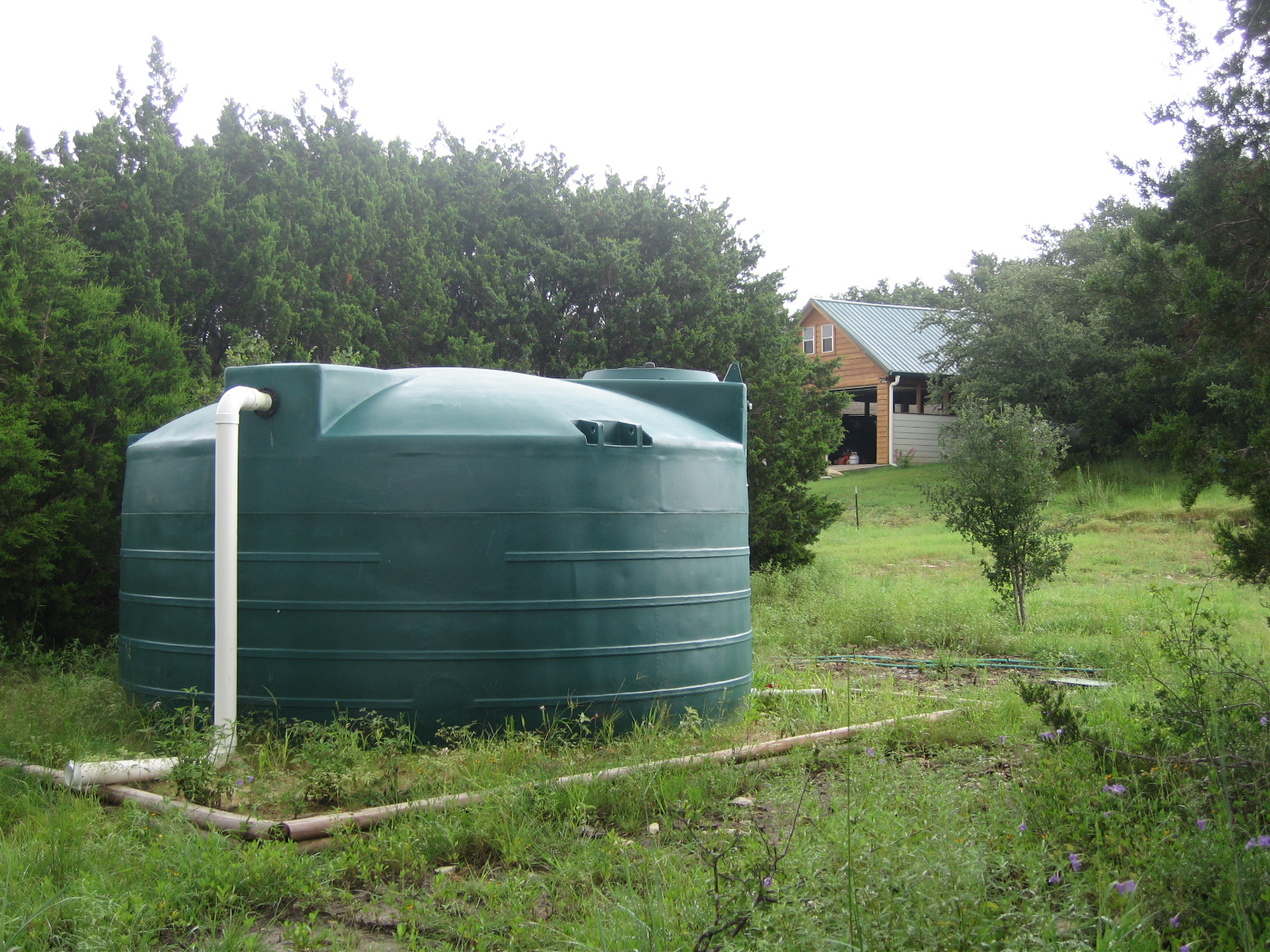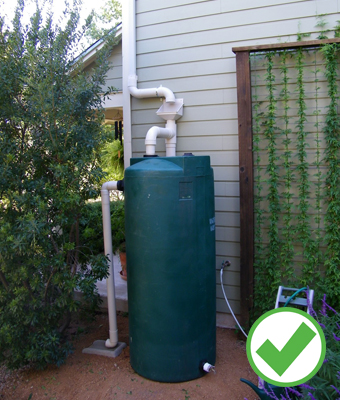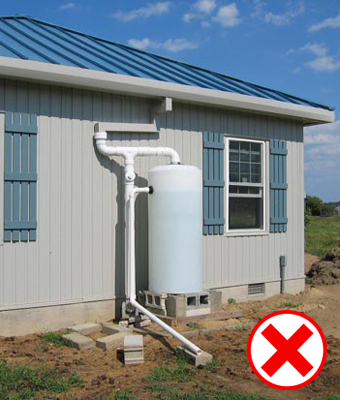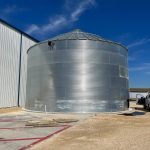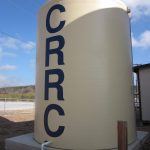Advantages:
- Economical storage solution for water.
- Impact resistant, easily mold-able, and can have some UV sunlight degradation protection.
- Available in a wide variety of sizes, capacities, and colors.
- Provides strength and durability for years of reliable performance.
- Can be food grade, NSF approved for drinking water storage.
- PE tanks are easier to move and install by hand due to their strength and lightness.
- The lighter weight of PE tanks can mean lower shipping cost when compared to other tank materials.
- PE tanks won’t rust over time and have to be replaced.
- If a PE tank is accidentally punctured, it can easily be repaired, in most cases.
Disadvantages:
- The aesthetic appearance of PE tanks can be lacking.
- UV sunlight degradation of the plastic over the years even if a UV inhibitor is in the plastic
- PE tanks come in fixed sizes, creating “gaps” in the product range that may prevent you from finding the exact tank size you need.
- If you desire a large rainwater storage volume, you would have to use multiple PE tanks which could end up wasting space. Think about a round peg going into a square or a rectangle.
- PE tanks are susceptible to wildfires.
- The manufacturing process of plastic from oil is a heavy pollution generating industry.
The Color of Polyethylene Tanks REALLY Does Matter
Polyethylene (abbreviated PE) is the most common plastic. Many kinds of polyethylene are known, with most having the chemical formula (C2H4)n.
High-density polyethylene (HDPE) is the polyethylene most commonly used for water tank manufacturing. While there are different styles of PE tanks on the market, the traditional round tank with a domed top is the best choice for rainwater collection.
HDPE is defined by a density of greater or equal to 0.941 g/cm3. HDPE has a low degree of branching. The mostly linear molecules pack together well, so intermolecular forces are stronger than in highly branched polymers. HDPE has high tensile strength.


